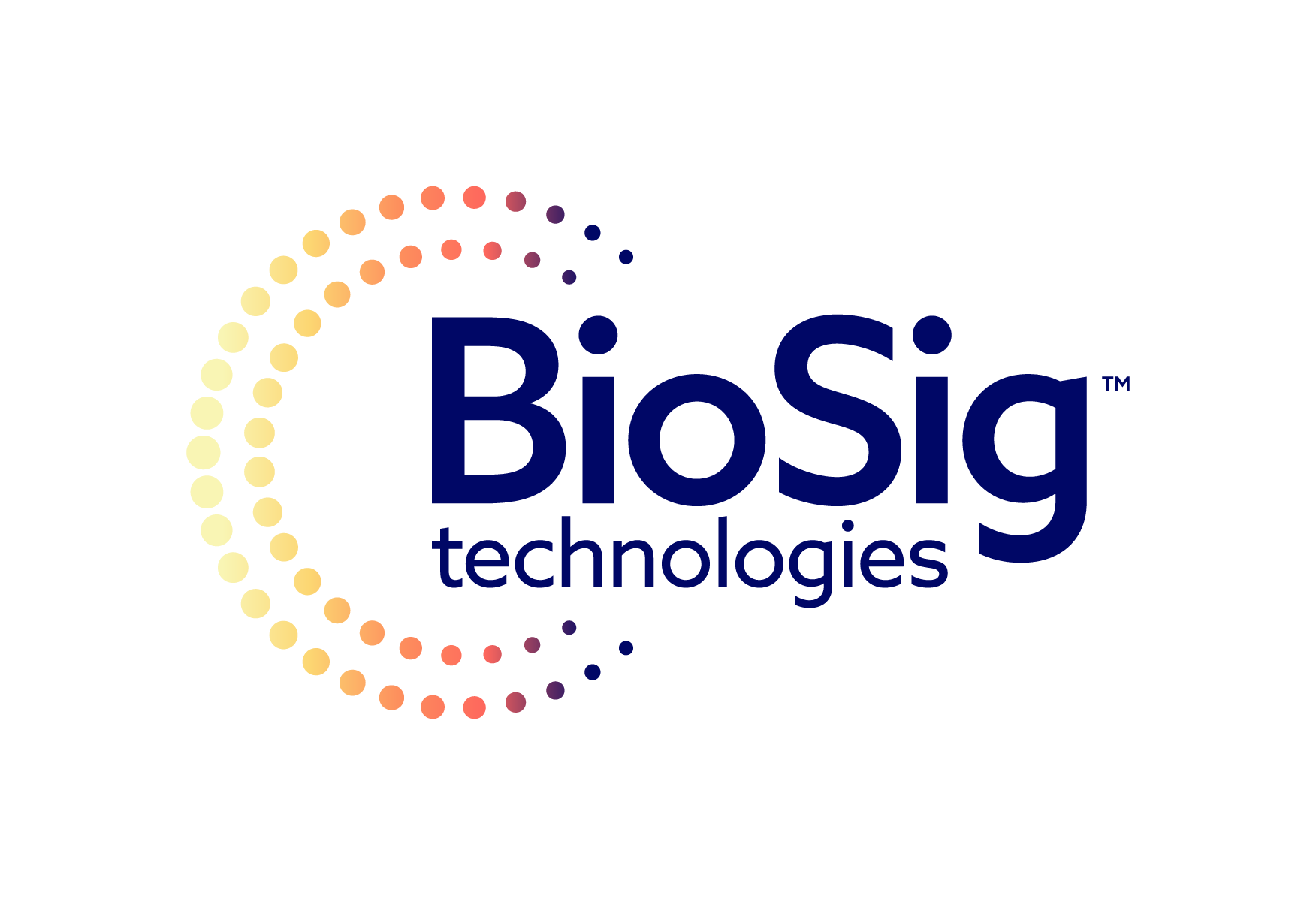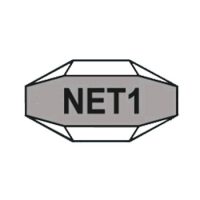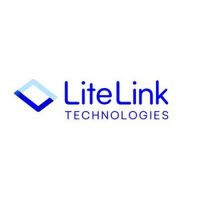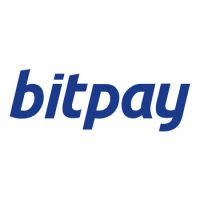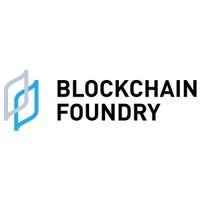Blockchain
Jianpu Technology Inc. Reports Second Six Months and Fiscal Year 2021 Unaudited Financial Results

Jianpu Technology Inc. (“Jianpu,” or the “Company”) (NYSE: JT), a leading independent open platform for discovery and recommendation of financial products in China, today announced its unaudited financial results for the six months and fiscal year ended December 31, 2021.
Second six months 2021 Operational and Financial Highlights:
- The credit card volume and number of domestic loan applications for recommendation services respectively increased by 75.0% to approximately 2.1 million and 118.4% to approximately 8.3 million in the second six months of 2021. As a result, total revenues of recommendation services for the second six months of 2021 resumed growth, increasing by 71.4% to RMB320.3 million (US$50.3 million) from RMB186.9 million in the same period of 2020.
- Revenues from big data and system-based risk management services decreased by 10.4% to RMB67.3 million (US$10.6 million) in the second six months of 2021 from RMB75.1 million in the same period of 2020. The number of paying customers decreased by 27.5% in the second six months of 2021, compared with the same period of 2020.
- Revenues from advertising and marketing services and other services increased by 240.6% to RMB73.9 million (US$11.6 million) in the second six months of 2021 from RMB21.7 million in the same period of 2020. The increase was mainly attributable to the growth of insurance brokerage services and initiatives of other new businesses.
- Net loss was RMB108.3 million (US$17.0 million) in the second six months of 2021, compared with RMB186.9 million in the second six months of 2020. Net loss margin was
- 23.5% in the second six months of 2021, compared with 65.9% in the same period of 2020.
- Non-GAAP adjusted net loss[1] was RMB96.7 million (US$15.2 million) in the second six months of 2021, compared with Non-GAAP adjusted net loss of RMB215.1 million in the second six months of 2020. Non-GAAP adjusted net loss margin[1] was 21.0 % in the second six months of 2021, compared with 75.8% in the same period of 2020.
Fiscal year 2021 Operational and Financial Highlights:
- The credit card volume and number of domestic loan applications for recommendation services respectively increased by 32.1% to approximately 3.7 million and 94.3% to approximately 13.6 million in the fiscal year of 2021. As a result, total revenues of recommendation services for the fiscal year of 2021 resumed growth, increasing by 42.2% to RMB575.2 million (US$90.3 million) from RMB404.4 million in the prior year.
- Revenues from big data and system-based risk management services decreased by 9.6% to RMB130.4 million (US$20.5 million) in the fiscal year of 2021 from RMB144.2 million in the prior year. The number of paying customers decreased by 12.2% in the fiscal year of 2021, compared with the prior year.
- Revenues from advertising and marketing services and other services increased by 167.2% to RMB99.4 million (US$15.6 million) in the fiscal year of 2021 from RMB37.2 million in the prior year. The increase was mainly attributable to the growth of insurance brokerage services and initiatives of other new businesses.
- Net loss was RMB204.1 million (US$32.0 million) in the fiscal year of 2021, compared with RMB312.1 million in the prior year. Net loss margin was 25.4% in the fiscal year of 2021, compared with 53.3% in the prior year.
- Non-GAAP adjusted net loss[1] was RMB186.7 million (US$29.3 million) in the fiscal year of 2021, compared with Non-GAAP adjusted net loss of RMB333.4 million in the prior year. Non-GAAP adjusted net loss margin[1] was 23.2% in the fiscal year of 2021, compared with 56.9% in the prior year.
Mr. David Ye, Co-founder, Chairman, and Chief Executive Officer of Jianpu, commented, “We are pleased to announce that we successfully turned our business around in 2021, with total revenue up 37.4% year-on-year. We managed this via a more diversified and balanced revenue structure. By leveraging our integrated marketing capabilities, we have improved our business efficiency, whilst also expanding our business into other Non-financial categories. We continued to expand our efforts in empowering financial institutions’ digital transformation, and now cooperate with 46 banks and have helped the issuance of over 23 million credit cards cumulatively. There were significant client wins for our big data and system-based risk management services, and our cost optimization initiatives drove margin improvements resulting in a narrowing of Non-GAAP adjusted net loss by 44%.
“These results were primarily driven by our experience navigating through turbulence, our readiness to make changes and adapt to a dynamic environment, and the effective execution of strategies and solid technological capabilities. As part of our vision of “Becoming everyone’s financial partner”, we are continuously innovating our technologies and exploring new growth drivers as we push forth our mission of empowering users and enabling the digital transformation of financial service providers to better serve them.”
Mr. Oscar Chen, Chief Financial Officer of Jianpu, said, “Our second-half and full year results reflect our continuous efforts in business development and optimization, as we continue to capitalize on the ongoing digitization of the financial industry. Despite the tightening macro environment and ongoing pandemic, our business made a turnaround with second-half total revenue up 62.7% year-on-year to RMB461.5 million and fiscal year 2021 revenue up 37.4% to RMB805.0 million. As we continue to make solid progress on our business optimization strategy, our Non-GAAP adjusted net loss continued to narrow. We are also pursuing new opportunities to further diversify our business through leveraging our existing foundation and technologies. The application of omnichannel marketing solutions towards other adjacent categories have delivered strong revenue growth. We believe the scalability and resilience of our business model, as well as our team’s capability to navigate through and adapt to the dynamic environment, will ultimately drive long-term value to our shareholders.”
Second six months 2021 Financial Results
Total revenues for the second six months of 2021 increased by 62.7% to RMB461.5 million (US$72.4 million) from RMB283.6 million in the same period of 2020.
Total revenues from recommendation services increased by 71.4% to RMB320.3 million (US$50.3 million) in the second six months of 2021 from RMB186.9 million in the same period of 2020.
Revenues from recommendation services for credit cards increased by 84.2% to RMB228.0 million (US$35.8 million) in the second six months of 2021 from RMB123.8 million in the same period of 2020. Credit card volume in the second six months of 2021 and 2020 were approximately 2.1 million and 1.2 million, respectively. The average fee per credit card increased to RMB109.9 (US$17.3) in the second six months of 2021 from RMB106.1 in the same period of 2020.
Revenues from recommendation services for loans increased by 46.4% to RMB92.4 million (US$14.5 million) in the second six months of 2021 from RMB63.1 million in the same period of 2020, primarily due to the increase in number of loan applications on our platform. The number of domestic loan applications on the Company’s platform was approximately 8.3 million in the second six months of 2021, representing an increase of approximately 118.4% from the same period of 2020. The average fee per domestic loan application decreased to RMB10.5 (US$1.6) in the second six months of 2021 from RMB12.7 in the same period of 2020. The recommendation revenue of loans generated from overseas markets accounted for 5.4% of total loan recommendation revenues in the second six months of 2021, less contribution than the same period of 2020. The global COVID-19 pandemic and the associated inability to travel globally has negatively impacted our overseas business.
Revenues from big data and system-based risk management services decreased by 10.4% to RMB67.3 million (US$10.6 million) in the second six months of 2021 from RMB75.1 million in the same period of 2020, primarily due to the decrease of the number of paying customers in the second six months of 2021.
Revenues from advertising and marketing services and other services increased by 240.6% to RMB73.9 million (US$11.6 million) in the second six months of 2021 from RMB21.7 million in the same period of 2020, primarily due to the growth of insurance brokerage services and initiatives of other new businesses.
Cost of promotion and acquisition[3] increased by 72.5% to RMB334.9 million (US$52.5 million) in the second six months of 2021 from RMB194.2 million in the same period of 2020. The increase was in line with the growth of our revenue from recommendation services, advertising and marketing services and other services.
Cost of operation decreased by 11.4 % to RMB45.1 million (US$7.1 million) in the second six months of 2021 from RMB50.9 million in the same period of 2020. The decrease was primarily attributable to the decrease in depreciation expenses, payroll costs and bandwidth and server costs, partially offset by the increase in data acquisition costs.
Sales and marketing expenses increased by 9.0% to RMB68.8 million (US$10.8 million) in the second six months of 2021 from RMB63.1 million in the same period of 2020. The increase was primarily due to the increase in sales and marketing staff for new businesses.
Research and development expenses decreased by 21.2% to RMB62.4 million (US$9.8 million) in the second six months of 2021 from RMB79.2 million in the same period of 2020, primarily due to the continued cost optimization measures.
General and administrative expenses decreased by 0.4% to RMB72.2 million (US$11.3 million) in the second six months of 2021 from RMB72.5 million in the same period of 2020, primarily due to the decrease in professional fees and allowance for credit losses, partially offset by the increase in share-based compensation expenses and payroll expenses.
Others, net increased by 137.9% to RMB15.7 million (US$2.5 million) in the second six months of 2021 from RMB6.6 million in the same period of 2020. The increase was primarily from the realized investment gain of RMB11.1 million from the investment in Conflux Global, a decentralized applications blockchain solution provider.
Net loss was RMB108.3 million (US$17.0 million) in the second six months of 2021 compared with RMB186.9 million in the same period of 2020. Net loss margin was 23.5% in the second six months of 2021 compared with 65.9% in the same period of 2020.
Non-GAAP adjusted net loss, which excluded share-based compensation expenses and impairment loss from net loss, was RMB96.7 million (US$15.2 million) in the second six months of 2021, compared with RMB215.1 million in the same period of 2020.
Non-GAAP adjusted EBITDA[2], which excluded share-based compensation expenses, impairment loss, depreciation and amortization, interest income and expenses, and income tax benefits from net loss, for the second six months of 2021 was a loss of RMB94.6 million (US$14.8 million), compared with a loss of RMB207.4 million in the same period of 2020.
Fiscal Year 2021 Financial Results
Total revenues for the fiscal year of 2021 increased by 37.4% to RMB805.0 million (US$126.3 million) from RMB585.8 million in the prior year.
Total revenues from recommendation services increased by 42.2% to RMB575.2 million (US$90.3 million) in the fiscal year of 2021 from RMB404.4 million in the prior year.
Revenues from recommendation services for credit cards increased by 38.4% to RMB407.8 million (US$64.0 million) in the fiscal year of 2021 from RMB294.6 million in the prior year. Credit card volume in the fiscal year of 2021 and 2020 were approximately 3.7 million and 2.8 million, respectively. The average fee per credit card increased to RMB109.8 (US$17.2) in the fiscal year of 2021 from RMB106.8 in the prior year.
Revenues from recommendation services for loans increased by 52.6% to RMB167.5 million (US$26.3 million) in the fiscal year of 2021 from RMB109.8 million in the prior year, primarily due to the increase in number of loan applications on our platform. The number of domestic loan applications on the Company’s platform was approximately 13.6 million in the fiscal year of 2021, representing an increase of approximately 94.3% from fiscal year 2020. The average fee per domestic loan application decreased to RMB11.4 (US$1.8) in the fiscal year of 2021 from RMB13.3 in the prior year. The recommendation revenue of loans generated from overseas markets was 7.6% of total loan recommendation revenues in the fiscal year of 2021, less contribution than prior year. The global COVID-19 pandemic and the associated inability to travel globally has negatively impacted our overseas business.
Revenues from big data and system-based risk management services decreased by 9.6% to RMB130.4 million (US$20.5 million) in the fiscal year of 2021 from RMB144.2 million in the prior year, primarily due to the decrease of the number of paying customers in the fiscal year of 2021.
Revenues from advertising and marketing services and other services increased by 167.2% to RMB99.4 million (US$15.6 million) in the fiscal year of 2021 from RMB37.2 million in the prior year, primarily due to the growth of insurance brokerage services and initiatives of other new businesses.
Cost of promotion and acquisition[3] increased by 48.2% to RMB562.1 million (US$88.2 million) in the fiscal year of 2021 from RMB379.4 million in the prior year. The increase was primarily in line with the growth of our revenue from recommendation services, advertising and marketing services and other services.
Cost of operation decreased by 4.2% to RMB88.0 million (US$13.8 million) in the fiscal year of 2021 from RMB91.9 million in the prior year. The decrease was primarily attributable to the decrease in depreciation expenses, and bandwidth and server costs, partially offset by the increase in data acquisition costs.
Sales and marketing expenses increased by 11.6% to RMB143.5 million (US$22.5 million) in the fiscal year of 2021 from RMB128.6 million in the prior year. The increase was primarily due to the increase in sales and marketing staff for new businesses.
Research and development expenses decreased by 14.5% to RMB132.4 million (US$20.8 million) in the fiscal year of 2021 from RMB154.8 million in the prior year, primarily due to the continued cost optimization measures.
General and administrative expenses increased by 0.7% to RMB137.5 million (US$21.6 million) in the fiscal year of 2021 from RMB136.6 million in the prior year. The increase was primarily attributable to the increase in payroll expenses and share-based compensation expenses, partially offset by the decrease in professional fees and allowance for credit losses.
Others, net increased by 417.9% to RMB58.0 million (US$9.1 million) in the fiscal year of 2021 from RMB11.2 million in the prior year. The increase was primarily from the realized investment gain of RMB51.2 million from the investment in Conflux Global, a decentralized applications blockchain solution provider.
Net loss was RMB204.1 million (US$32.0 million) in the fiscal year of 2021 compared with RMB312.1 million in the prior year. Net loss margin was 25.4% in the fiscal year of 2021 compared with 53.3% in the prior year.
Non-GAAP adjusted net loss, which excluded share-based compensation expenses and impairment loss from net loss, was RMB186.7 million (US$29.3 million) in the fiscal year of 2021, compared with RMB333.4 million in the prior year.
Non-GAAP adjusted EBITDA[2], which excluded share-based compensation expenses, impairment loss, depreciation and amortization, interest income and expenses, and income tax benefits from net loss, for the fiscal year of 2021 was a loss of RMB179.2 million (US$28.1 million), compared with a loss of RMB315.8 million in the prior year.
As of December 31, 2021, the Company had cash and cash equivalents, time deposits, restricted cash and time deposits and short-term investment of RMB762.8 million (US$119.7 million), and working capital of approximately RMB424.9 million (US$66.7 million). Compared to as of December 31, 2020, cash and cash equivalents, restricted cash, time deposits and investment and short-term investment decreased by RMB233.2 million (US$36.6 million), which was attributable to net cash used in operating activities.
Blockchain
BioSig Technologies, Inc. Signs Definitive Share Exchange Agreement with Streamex Exchange Corp. to Launch First-Mover Real-World Asset (RWA) Tokenization Company Bringing Commodity Markets On-Chain.
Blockchain
From Onboarding to Settlement in Minutes: TransFi Launches BizPay to Redefine Global Business Payments

TransFi
Blockchain
Blocks & Headlines: Today in Blockchain – May 22, 2025

The blockchain universe never sleeps. From pioneering cross-border payment systems in Central America to city-wide crypto strategies in New York City, today’s headlines reveal an industry maturing at breakneck speed. In this edition of Blocks & Headlines, we explore five landmark developments:
-
Guatemala’s Banco Industrial integrates blockchain for seamless cross-border remittances.
-
NYC Mayor’s Office unveils a comprehensive crypto and blockchain roadmap.
-
OSR Holdings, BCM Europe & Taekwondo Cooperative sign an MOU to launch the OSRH token.
-
Bybit’s “Chicken Trader” livestream—crypto meets poultry in the world’s first poultry-powered trading showdown.
-
FIFA taps Avalanche to build a dedicated blockchain for its NFT platform.
These stories underscore three key trends reshaping the ecosystem:
-
Institutional Adoption & Regulation: From national banks to municipal governments, legacy institutions are embracing decentralized technologies.
-
Tokenization & Community Engagement: Strategic partnerships are launching specialized tokens that bridge niche communities with global markets.
-
Innovative Use Cases: Whether gaming, entertainment, or live-stream events, blockchain’s versatility spawns ever-more creative applications.
Join us as we unpack the implications, weigh the opportunities, and forecast where these trajectories might lead.
1. Guatemala’s Largest Bank Integrates Blockchain for Cross-Border Payments
What Happened
Guatemala’s Banco Industrial, the country’s biggest financial institution, announced the deployment of a private‐permissioned blockchain network to streamline remittances from the U.S. into Guatemala City and beyond. The solution reduces settlement times from days to minutes, cuts fees by up to 60 %, and offers real-time traceability for senders and receivers.
Source: Cointelegraph
Analysis & Commentary
-
Financial Inclusion Boost: Remittances account for over 12 % of Guatemala’s GDP. By minimizing friction and cost, blockchain integration will extend financial services to remote communities reliant on diaspora funds.
-
Risk & Compliance: Permissioned networks allow Banco Industrial to retain AML/KYC controls, mitigating concerns around illicit flows. This hybrid approach demonstrates that enterprise blockchain can balance decentralization with regulatory rigor.
-
Regional Ripple Effects: Neighboring Central American banks are watching closely. Should Guatemala’s pilot succeed, we can expect a domino effect across El Salvador, Honduras, and Costa Rica—each seeking to capitalize on faster, cheaper cross-border rails.
Implications
Legacy banks worldwide should view this as a blueprint: private blockchains can coexist with existing compliance frameworks while delivering transformative user benefits. Early movers will capture remittance market share and cultivate fintech partnerships across the Latin American corridor.
2. NYC Mayor Unveils Ambitious Crypto & Blockchain Agenda
What Happened
New York City Mayor Eric Adams detailed his administration’s multi-pronged strategy to make NYC a global crypto hub. Key initiatives include:
-
A regulatory sandbox for crypto startups to pilot DeFi, NFTs, and token-based fundraising under city supervision.
-
Partnerships with CUNY and Columbia University for blockchain research and talent development.
-
Deployment of a blockchain-based public record system for land titles and business registrations.
Source: GovTech
Analysis & Commentary
-
Regulatory Harmony vs. Overreach: By offering a controlled sandbox rather than blanket deregulation, NYC signals a nuanced stance—encouraging innovation without sacrificing consumer protection.
-
Talent Pipeline: Academic partnerships aim to remedy the talent shortage plaguing blockchain firms. Local graduates trained in distributed ledger technologies (DLT) will feed startups, financial institutions, and government agencies.
-
Public Services on Chain: Land registries and business filings on blockchain promise greater transparency and fraud reduction. If scaled effectively, NYC could set a global standard for government-blockchain integration.
Implications
Other major cities—London, Singapore, Dubai—will feel pressure to match NYC’s playbook. Municipal leaders should prioritize sandbox frameworks and academia-industry liaisons to nurture homegrown crypto ecosystems.
3. OSR Holdings, BCM Europe & Taekwondo Cooperative Launch OSRH Token
What Happened
OSR Holdings, BCM Europe, and the Taekwondo Cooperative signed a strategic Memorandum of Understanding to co-develop the OSRH token, a blockchain-based digital asset aimed at supporting global Taekwondo practitioners. Features include:
-
Membership Rewards: Tokens earned through event participation, coaching certifications, and tournament wins.
-
Decentralized Governance: Athletes vote on sponsorship allocations and rule-change proposals via on-chain ballots.
-
Marketplace Integration: A dedicated NFT marketplace for Taekwondo memorabilia, from digital belts to highlight reels.
Source: PR Newswire
Analysis & Commentary
-
Niche Tokenization: OSRH token exemplifies the power of community-focused tokens. By aligning incentives with passion points—training, competition, governance—stakeholders gain ownership and engagement.
-
Governance Innovation: Athlete-driven decision-making on sponsorship and funding disrupts top-down federation models. This could democratize sports governance across disciplines.
-
Commercial Ecosystem: The NFT marketplace offers monetization channels for athletes and federations alike. Strategic royalties on secondary sales ensure sustainable funding.
Implications
Other sports federations and niche communities should explore token models that blend rewards, governance, and commerce. Successful launches will hinge on clear utility, user education, and regulatory compliance in key jurisdictions.
4. Bybit Presents “Chicken Trader”: The World’s First Poultry-Powered Trading Showdown
What Happened
Cryptocurrency exchange Bybit debuted “Chicken Trader,” a live-streamed event where two contestants trade crypto pairs—and manage live chickens—to earn “Egg Points.” Viewers can stake on their favorite trader, earning NFTs and token rewards based on performance.
Source: PR Newswire
Analysis & Commentary
-
Gamification Meets DeFi: Chicken Trader’s fusion of live-stream engagement, staking mechanics, and NFTs exemplifies Web3’s playful ethos—turning trading into interactive entertainment.
-
User Acquisition Strategy: Bybit gamified acquisition funnels, leveraging viral social content to onboard nontraditional crypto audiences intrigued by the novelty factor.
-
Regulatory Tightrope: Combining staking with competition and livestock raises jurisdictional questions around gambling, securities, and animal welfare. Bybit must navigate diverse regulations to scale globally.
Implications
Other exchanges will replicate gamified formats to differentiate UX and grow communities. Yet long-term viability demands balancing flashy live-events with rigorous compliance, sustainable tokenomics, and authentic value for participants.
5. FIFA Taps Avalanche to Power Its NFT Platform
What Happened
Global soccer body FIFA selected the Avalanche blockchain to launch its official NFT marketplace, featuring digital collectibles—from World Cup highlights to player-card packs. Avalanche’s high throughput and low fees were cited as decisive factors.
Source: TradingView (via Cointelegraph)
Analysis & Commentary
-
Scalability & Sustainability: Avalanche’s consensus mechanism delivers sub-second finality and carbon-offset commitments, aligning with FIFA’s environmental pledges.
-
Fan Engagement: Tokenized highlights and limited-edition digital memorabilia expand revenue streams beyond broadcast rights, offering fans verifiable ownership and collectible provenance.
-
Interoperability: Avalanche’s growing DeFi ecosystem enables future integrations—staking fan tokens, launching prediction-market games, or embedding NFT rewards in FIFA’s mobile apps.
Implications
Major sports leagues and entertainment brands eyeing NFT forays will scrutinize Avalanche’s performance under FIFA’s global load. Blockchain platforms must prove they can handle spikes during marquee events—kickoff times, finals, transfer windows—while preserving UX and sustainability goals.
Conclusion
Today’s Blocks & Headlines illustrate blockchain’s multifaceted evolution:
-
Legacy institutions like banks and city governments are unlocking new efficiencies and transparency through private and public DLT networks.
-
Community-driven tokens are redefining governance and monetization in sports and niche domains.
-
Innovative engagement—from poultry-fueled trading spectacles to global soccer NFTs—demonstrates blockchain’s capacity for gamification, fan loyalty, and novel revenue models.
Yet with opportunity comes responsibility: scalable architectures must coexist with robust compliance; token economies require thoughtful design to sustain value; and regulators, academia, and industry must collaborate to craft frameworks that balance innovation with consumer protection.
As blockchain weaves deeper into finance, governance, entertainment, and sports, stakeholders who embrace strategic partnerships, prioritize user education, and invest in resilient infrastructures will lead the charge into Web3’s next frontier.
The post Blocks & Headlines: Today in Blockchain – May 22, 2025 appeared first on News, Events, Advertising Options.
-

 Blockchain Press Releases5 days ago
Blockchain Press Releases5 days agoCoinW Unveils Industry-First Futures Protection Program:Instant Refunds Designed to Safeguard Traders
-

 Blockchain Press Releases2 days ago
Blockchain Press Releases2 days agoCM Global Services (CMGS) Secures Exclusive Multi-Year Logistics & Procurement Partnerships with Compass Mining and NovoMod
-

 Blockchain4 days ago
Blockchain4 days agoBlocks & Headlines: Today in Blockchain – May 19, 2025 | DoubleZero, Toobit, Story Protocol, Marco Polo, Argo Blockchain
-

 Blockchain Press Releases2 days ago
Blockchain Press Releases2 days agoOnRe, Backed by Ethena, Solana Ventures, and RockawayX Launches Structured Yield Product Combining Real-World Stability and On-Chain Upside
-

 Blockchain Press Releases4 days ago
Blockchain Press Releases4 days agoHTX Unveils Finalists for $6M Mars Program Special Edition, Space Journey Selection Enters Final Phase
-

 Blockchain Press Releases4 days ago
Blockchain Press Releases4 days agoHTX Launches Multi-Assets Collateral Mode for USDT-Margined Futures, Empowering Traders With Enhanced Capital Efficiency
-

 Blockchain Press Releases3 days ago
Blockchain Press Releases3 days agoHTX Executives Go Face-to-Face: Justin Sun & Molly Dive Into Market Strategy, Space Visions, and More Opportunities
-

 Blockchain3 days ago
Blockchain3 days agoVanEck Prepares to Launch PurposeBuilt Fund to Invest in Real-World Applications on Avalanche
















